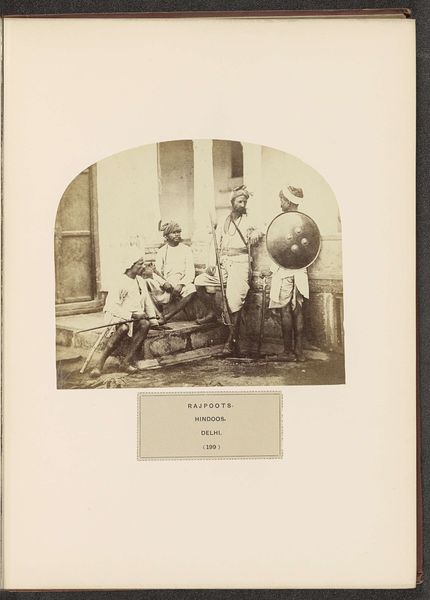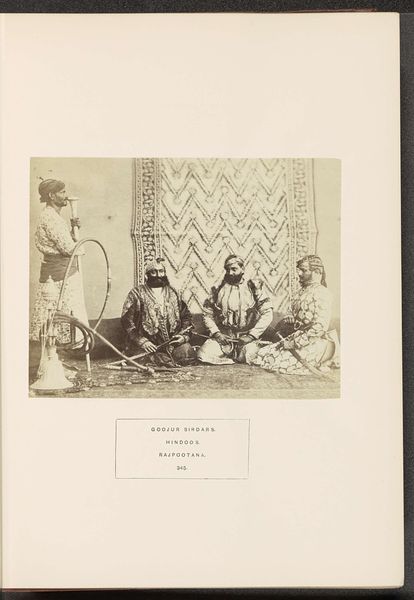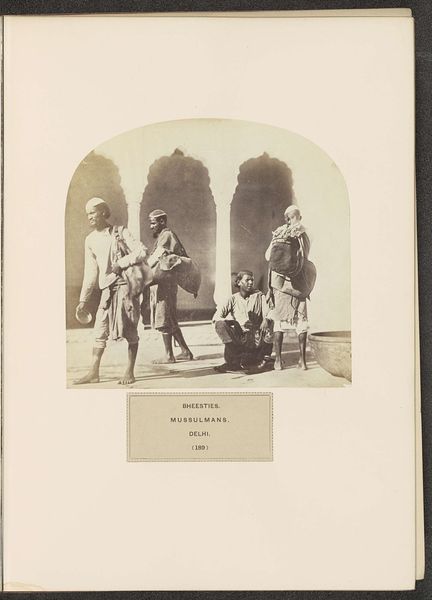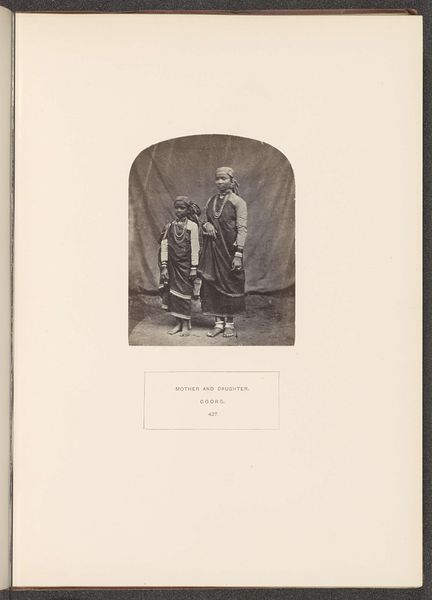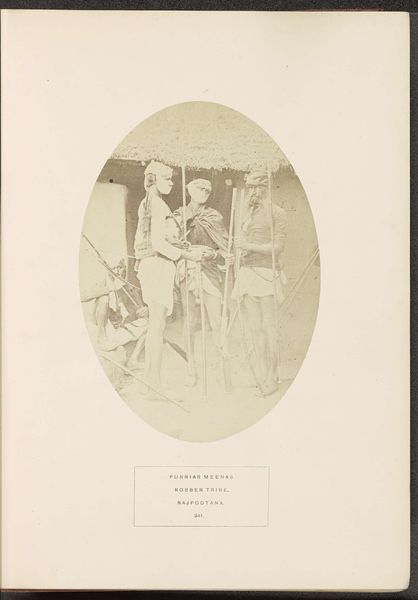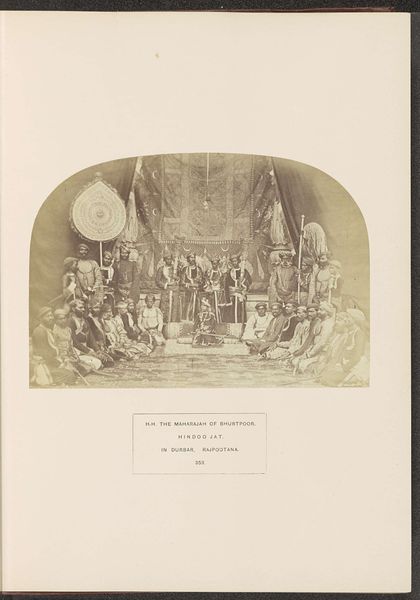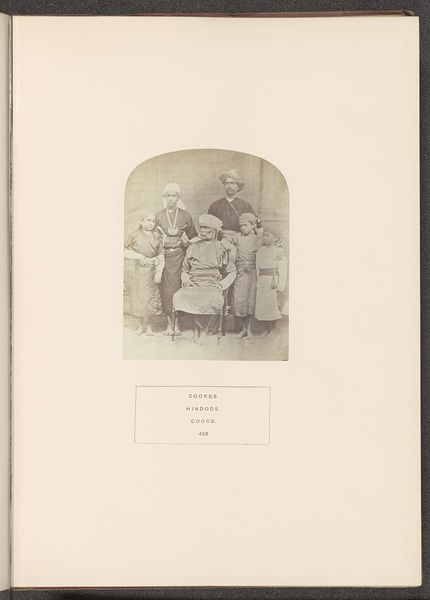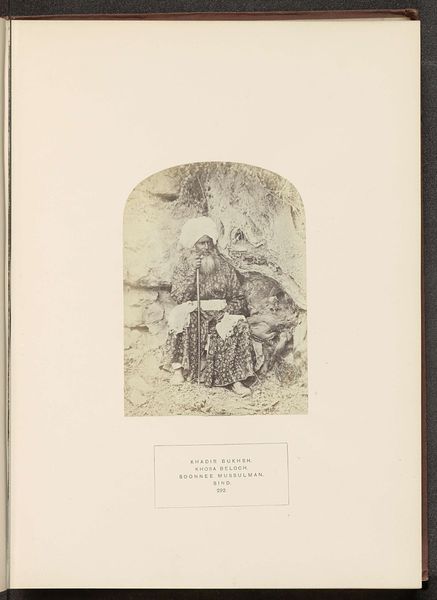
Portret van vijf onbekende mannen van de Hara-stam met wapens before 1874
0:00
0:00
photography
#
portrait
#
photography
Dimensions: height 145 mm, width 152 mm
Copyright: Rijks Museum: Open Domain
This photographic print by Eugene Clutterbuck Impey captures five armed, unidentified men of the Hara tribe. In British India during the second half of the 19th century, photography was used as a tool for documentation and control. Impey, serving as an administrator, likely commissioned or created this image to document and classify indigenous populations. The men are posed with their weapons, possibly to emphasize their perceived martial prowess or potential threat. Visual codes, such as the men's clothing, weapons, and posture, contribute to a narrative of otherness, reinforcing colonial power dynamics. The photograph was made in Rajputana, now Rajastan, during a period of political and economic change as British influence grew, and many local communities were pushed to the margins. To fully understand the photograph, we need to look at the photographer's personal history, the colonial context, and the history of British anthropological photography in India. The meaning of this photograph is contingent on those social and institutional forces that shaped its production and reception.
Comments
No comments
Be the first to comment and join the conversation on the ultimate creative platform.
